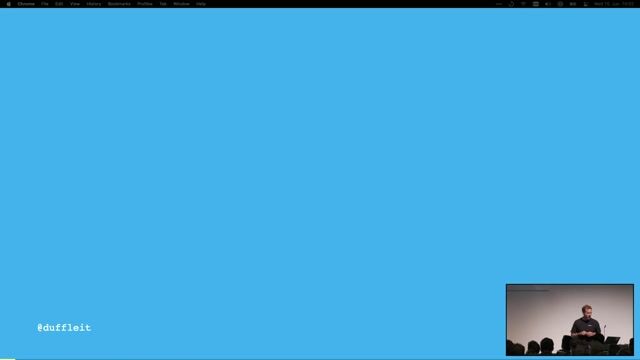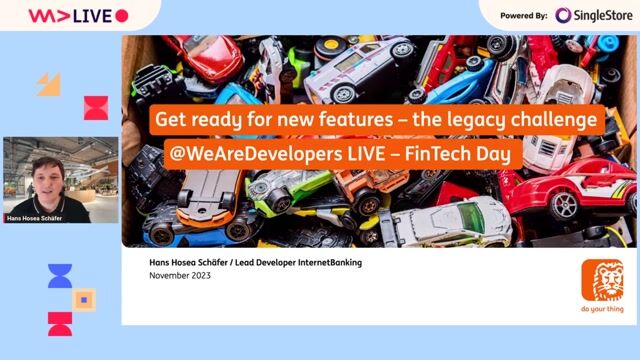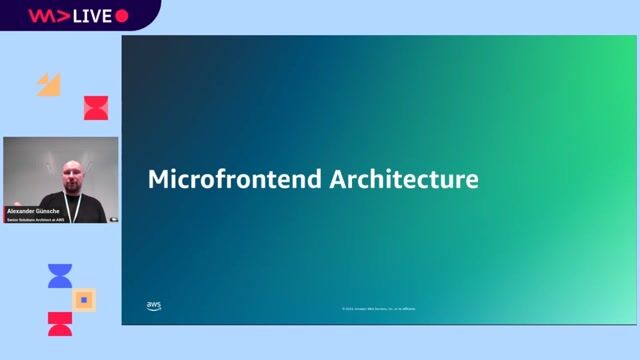Luka Samaržija & Ivan Sokol
Building high performance and scalable architectures for enterprises
#1about 5 minutes
The challenge of modernizing enterprise IT landscapes
Enterprise IT systems evolve over decades by layering new technology on old, requiring a progressive transformation focused on microservices, integration, and development practices.
#2about 4 minutes
Defining true microservices with data ownership and DDD
A true microservice is an autonomous application that owns its own data, best designed using domain-driven design (DDD) and bounded contexts to model specific business domains accurately.
#3about 5 minutes
Choosing between choreography and orchestration patterns
Select choreography for decoupled services and flexibility, or use orchestration with a BPM tool for complex, sequential processes that require high visibility and control.
#4about 4 minutes
Leveraging specialized tools for microservice development
Avoid hard-coding complex logic by using specialized tools like fast, in-memory rule engines, artifact repositories, and time-series databases for monitoring.
#5about 6 minutes
Core principles for integrating with legacy systems
Avoid multi-layered API flows and undocumented APIs by connecting as close to the data source as possible and separating read/write operations using the CQRS principle.
#6about 5 minutes
Applying patterns for data replication, caching, and commands
Use change data capture (CDC) to replicate legacy data, cache frequently accessed data from vendor APIs, and process slow commands asynchronously to improve user experience.
#7about 4 minutes
Implementing data aggregation and API management
Prepare aggregated data in advance using event-driven messages instead of on-the-fly calculations, and use API management tools to govern versions, ownership, and consumers.
#8about 5 minutes
Establishing organizational development standards for success
Enforce a standardized tech stack, mandate continuous integration (CI), and schedule dedicated time for optimization to ensure consistency and prevent technical debt across the organization.
#9about 5 minutes
Fostering effective development practices within teams
Empower teams with clear coding guidelines, a commitment to testing over deadlines, regular code reviews, and a structured approach to managing library dependencies.
#10about 14 minutes
Q&A on GraphQL, team structure, and vendor software
The discussion covers using GraphQL for backend-for-frontend (BFF) patterns, structuring teams into agile tribes and squads, and managing vendor software scalability with caching.
Related jobs
Jobs that call for the skills explored in this talk.
Featured Partners
Related Videos
 59:03
59:03Multiple Ships to the Island - Micro Frontends & Island Architectures
Florian Rappl
 46:24
46:24The Rise of Reactive Microservices
David Leitner
 43:13
43:13It’s all about the domain, honey ! Experiences from 15 years of Domain-Driven Design
Carola Lilienthal
 27:32
27:32Why you shouldn’t build a microservice architecture
Michael Eisenbart
 57:38
57:38Are you done yet? Mastering long-running processes in modern architectures
Bernd Ruecker
 58:52
58:52Get ready for new features - the legacy challenge
Hans Hosea Schäfer
 54:39
54:39Interface Contracts in Microfrontend Architectures
Alexander Günsche
 24:13
24:13Strategies to accelerate SaaS Application Development
Rajalakshmi Srinivasan
From learning to earning
Jobs that call for the skills explored in this talk.
Solution Architekt:in Mobile Computing
Enterprise Architect Logistics Services
Bellinzona, Switzerland
Remote
Java
.NET
Scrum
Kafka
+8
Senior Technical Architect - Full Stack
Copado
Municipality of Madrid, Spain
Intermediate
API
CSS
GIT
Java
REST
+20


Senior Systems/DevOps Developer (f/m/d)
Bonial International GmbH
Berlin, Germany
Senior
Python
Terraform
Kubernetes
Elasticsearch
Amazon Web Services (AWS)




Senior Fullstack Engineer – Angular/.Net (f/m/d)
Apaleo
München, Germany
Remote
€65-85K
Senior
.NET
Angular
JavaScript
+1






(Senior) IT Cloud Architekt /Banking (all genders)
msg
Ismaning, Germany
Intermediate
Senior
Docker
DevOps
Openshift
Kubernetes

